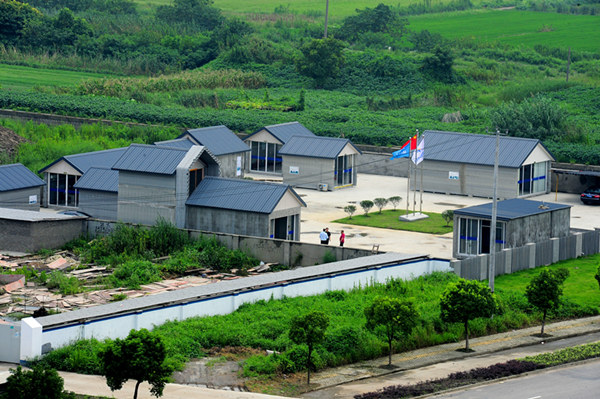A new way to build homes
By Yang Yang ( China Daily ) Updated: 2015-03-07 07:56:18
 |
|
3-D printed government offices in Shanghai Zhangjiang Hi-tech Park. Photo provided to China Daily |
Winsun Global is cooperating with Elion Resources Group, which has 20 years of experience in desertification control, to build 12 3-D printing factories in the Inner Mongolia autonomous region.
The waste from the construction can be recycled and used to build new homes with the 3-D printer, Zheng says.
One of the visitors, Guo Jianmiao, general manager of Suzhou Construction Material Recycling Application, was particularly interested in this aspect. "We specifically deal with construction waste. We have a 66,667-square-meter factory in Xiangcheng district. We are cooperating with the Suzhou government, which disposes 1.5 million to 2 million tons of construction waste every year," he says.
"So this is a good news for us. I will send our construction waste sample here to see whether we can cooperate," Guo told Zheng.
Ma Bin, general manager of Project Department of Shanghai Hailan Real Estate Development, is also interested in the use of 3-D printing technology to build homes. "I think the development of real estate has reached a bottleneck. It cannot satisfy customized demand," he says.
"No real estate developer can build customized buildings right now. The government won't approve the projects," he says.
"Ideally, we'll be able to create a website where people can design their own homes using 3-D technology ... Once it becomes more widely used, 3-D house printers will really shake up the real estate industry."
One of the biggest advantages of 3-D house printing is that it's easy to build parts that have an irregular shape. For example, Winsun Global is cooperating with Huangshan Happy New World Reserve to build 3,000 oval-shaped houses not far from the popular tourist site in Anhui province.
"Building these homes using traditional construction methods would be very difficult and expensive. But it will be easy to do it with the 3-D printer," Zheng says.
Disney also plans to cooperate with Winsun Global to build the Shanghai Disney Resort. "This technology will change people's perceptions about buildings," Zheng said.
According to Winsun Global's blueprint, they plan to build 100 "dreamwork" factories throughout China, which will be used to produce equipment and additive materials. A group of "ant" factories - where the walls for the 3-D homes will be put together - will also be built.
Despite these plans, 3-D house printing technology has not been officially approved by the government. The company is cooperating with Tongji University and China Construction Eight Engineering Division to apply for national approval.
Once the five-story building at the Suzhou Industrial Park passes government inspections, Winsun Global will be allowed to use 3-D technology to build any house under five stories.
"Our long-term goal is to build a 100-meter-high building that is 33 stories. Maybe we won't succeed. But if we can reach 22 stories, then we will have the capability of building any structure under 22 stories," Zheng says.
|
|
|
|
|
|
|
|

























 Raymond Zhou:
Raymond Zhou: Pauline D Loh:
Pauline D Loh: Hot Pot
Hot Pot Eco China
Eco China China Dream
China Dream China Face
China Face






